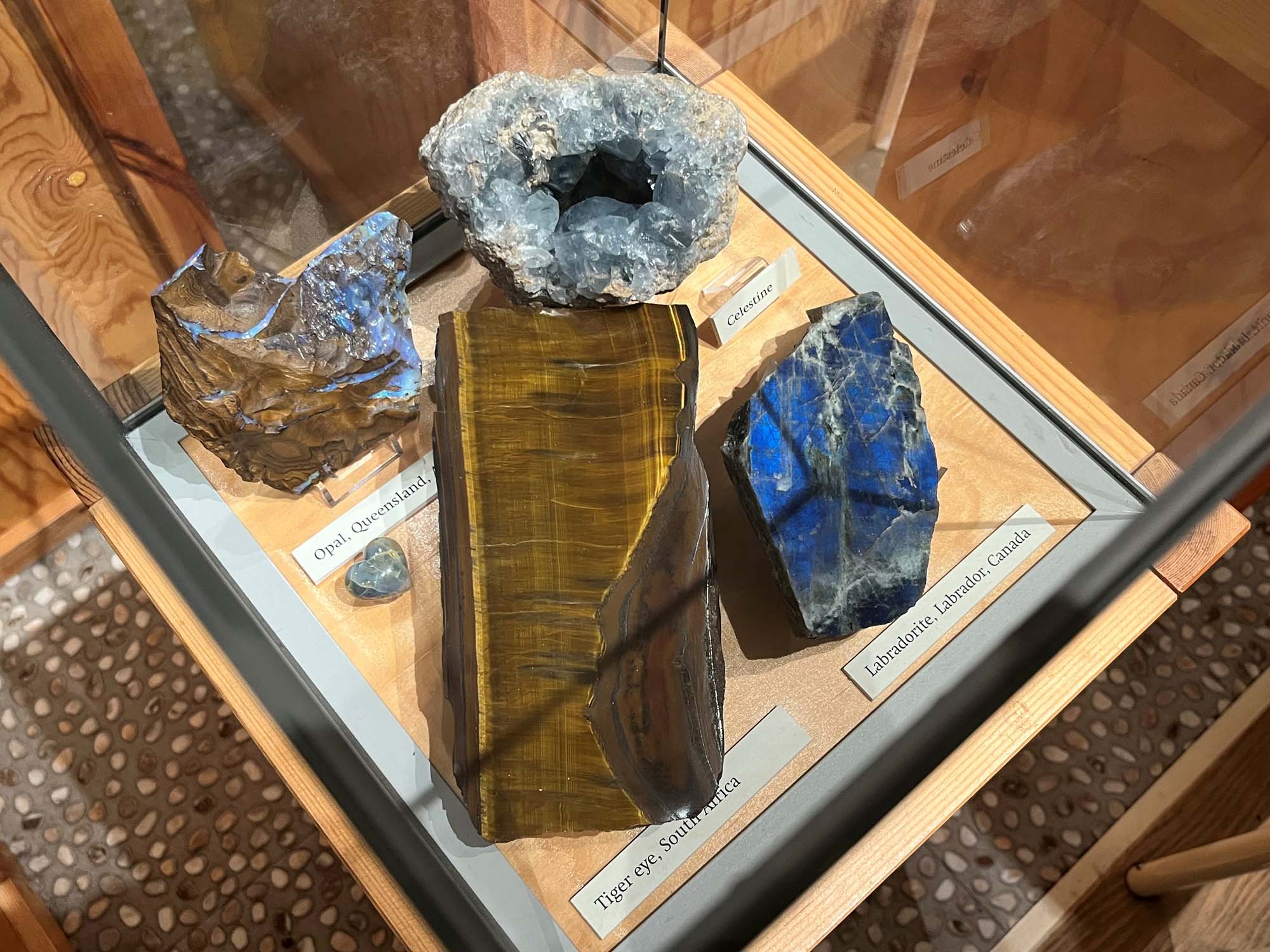Labradorite is a luminescent mineral found in igneous rocks and it takes its name from Labrador, Canada, where it was first identified. It can also be found in Norway, Finland and various other locations worldwide. Often dubbed ‘The Stone of Magic’, labradorite was important to Native American Innu culture. One Innu myth describes how a warrior entered a cave where he was struck by the bluey-green iridescent beauty of the stone. He realised that the Northern Lights had been imprisoned within the stone and he freed the light by bringing down his spear upon the crystals. This released the Northern Lights, but a small amount of light remained trapped, giving the stone its luminescence.
Collections Spotlight - Reflective Minerals
A selection of colourful and iridescent minerals on display at Leicester Museum & Art Gallery
Published: 4 March 2024
The Museum Collections team are currently carrying out a large geology documentation and relocation project in the basement of Leicester Museum & Art Gallery, as part of preparations for the museum's next major refurbishment due to start later this year. Inspired by this work, our new Collections Access Officer has been looking closer at the museum's geology displays and, like a mag-pie, was drawn to some of the most reflective, colourful and iridescent minerals on display. Below is a selection of four minerals and the cultural stories behind them.

The geology collection of minerals on display at the museum
These four examples of minerals and the wonderful stories surrounding them remind us of geology’s cultural significance as well as it's scientific significance. The Collections Team look forward to successfully completing their ongoing geology project, and sharing more stories for future generations of geologists and anthropologists alike!
Link Panels
Celestine
Celestine or ‘The Stone of Heaven’ is so called as, like the example at the museum, it is occasionally the colour of a pale-blue sky. It is a sulphate mineral which is often found in sedimentary rocks and it contains strontium which is used to produce deep red fireworks. Madagascar has yielded some of the best crystals, but the mineral can also be found in many different countries including the United States, Mexico and China. Celestine has been traded around the world for millennia and consequently it found its way into ancient European culture; for example, ancient Greeks and Romans protected themselves from evil by wearing amulets with celestine stones and, according to Sicilian legend, celestine fell from the stars.
Tiger’s Eye
Tiger’s Eye is a member of the quartz group and it is a golden-coloured metamorphic rock with a lustre. It is also a chatoyant gemstone which means that it has a reflective ‘cat’s eye effect’. Our tiger’s eye comes from South Africa; however, they can be found in various countries around the world. Perhaps due to their association with the mighty tiger, this stone is associated with confidence, strength and overcoming fear; it was therefore worn by some Roman soldiers on their breastplates when they went to war. The Ancient Egyptians associated the lustrous, golden stone with the sun and Pharaohs would wear tiger’s eye jewellery to represent power. The stone was also used by the Ancient Egyptians as eyes in their statues of gods.
Opal
This opal is sourced from Queensland which is a north-eastern state in Australia. It is called a ‘boulder opal’ as it attaches itself to a host rock, an ironstone boulder. This form of opal is unique to west Queensland and it has been important in indigenous Australian culture for tens of thousands of years. Opals feature in oral 'Dreamtime' stories which are key to Aboriginal religion and culture as they tell etiological tales which explain how creation came to exist. According to some indigenous Australian stories a Creator came to earth on a rainbow and his footsteps left behind multicoloured opals. Other stories suggest that opals are scales from the Rainbow Serpent who shaped the earth.
